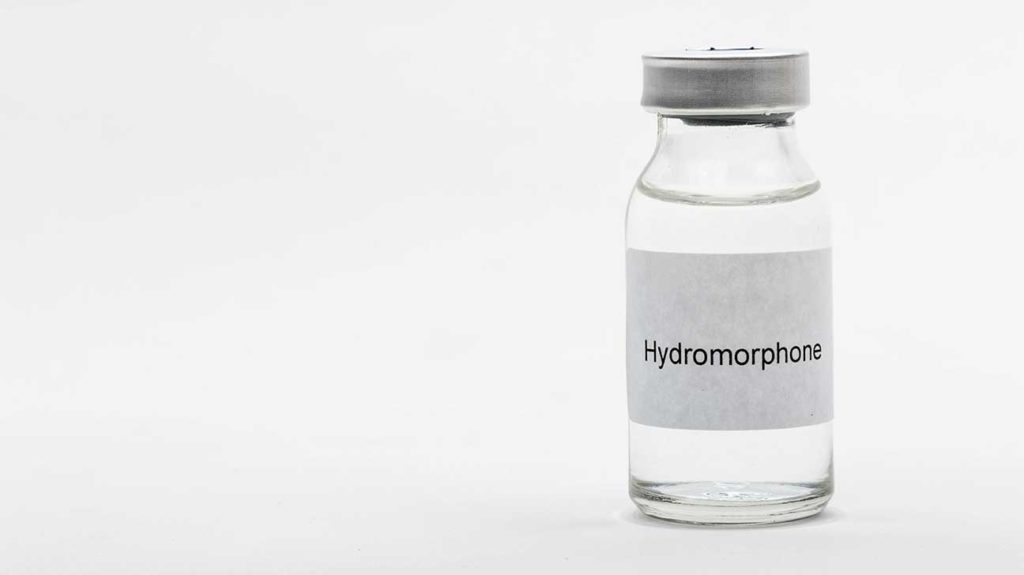
It blocks sodium channels so that local neurons can't signal the brain regarding sensations. Lidocaine works by blocking the conduction of pain impulses in a specific area. Lidocaine helps numb the area for patients to make their procedure a little less painful Mode of action
Hydromorphone antidote skin#
Lidocaine is a topical analgesic, typically used for conditions or procedures involving the skin or mucus membranes, like a wound vac dressing. Topical analgesic - lidocaine (Xylocaine) You may need to RUSH to give naloxone to your patient in response to: Respiratory depression, Urinary retention, Sedation, Hypotension. Keep in mind that this antidote almost immediately reverses analgesia, which means the pain comes back, and it can also cause hypertension, tachycardia, and agitation. Although there are other opioid antagonists, such as those used in long-term maintenance therapy for opioid addiction, naloxone is the only antidote for acute opioid toxicity! In your nursing career, it is fairly likely that you will need to administer Narcan to a patient someday. The antidote for an opioid overdose (including the opioids covered here as well as a heroin overdose) is naloxone (Narcan). Patients may ask you to "slam it in," but follow the best practice and do not do that. Opioids delivered via IV should be administered slowly. Patients may be prescribed an opioid for cancer pain, in which case it is often administered around the clock to "get ahead of" that pain. When you have a patient taking one of these opioid agonists, it's important to carefully monitor their pain level, their vital signs, and respiratory status.
Hydromorphone antidote series#
We covered one of the treatment options for opioid addiction in this series already, and that is maintenance treatment with methadone or buprenorphine which help reduce withdrawal symptoms and cravings. Opioid addiction is a mental health disorder that we cover in our Psychiatric Mental Health Nursing flashcards, including intoxication and withdrawal signs and symptoms, treatment, and key points. Oxycodone, fentanyl, morphine and Dilaudid carry a black box warning because of the life-threatening risks associated with respiratory depression, as well as the real risk for abuse and addiction to these medications.Īs you probably already know, the United States is facing an opioid overdose epidemic (external link) with the number of opioid overdose deaths increasing each year. There are some very serious side effects associated with opioid agonists like morphine, including respiratory depression (the most important one to know!), sedation, constipation, GI upset, hypotension, and urinary retention. Mode of actionįentanyl and other opioid analgesics work by binding to opioid receptors in the central nervous system. Opioid analgesics like oxycodone are used for moderate to severe pain.

There are other medications that fall into this category, but those four are the most common and most important ones to be familiar with. Opioids are sometimes referred to as narcotics, and can include fentanyl, morphine, Dilaudid and oxycodone. Opioid agonists are an important class of medication that you need to know for your NCLEX, other nursing exams, and in your nursing practice. Opioid agonists - Fentanyl, morphine, Dilaudid, oxycodone (Oxycontin) If your patient is planning to discontinue pregabalin, they should do so gradually, because of the risk of withdrawal symptoms like dizziness.

Alcohol is also a central nervous system depressant, so it will exacerbate the side effects of pregabalin. If you have a patient on pregabalin, advise them not to consume alcohol. Side effects of pregabalin can include drowsiness, dry mouth, dizziness, and possible edema. Pregabalin does not bind to opioid receptors, so it's not classified as an opioid. To decrease the release of these excitatory neurotransmitters means to decrease those effects. Basically, these excitatory neurotransmitters cause the action potential that communicates things like pain or an involuntary movement. Pregabalin works by binding to calcium channels in the central nervous system which decreases the release of excitatory neurotransmitters. Pregabalin prevents Gabby’s neuropathy pain. As an anticonvulsant, pregabalin is also sometimes used in the treatment of seizures. Pregabalin is an anticonvulsant that is used as an adjunct to treat certain types of pain, like neuropathy, fibromyalgia, restless-leg syndrome.


 0 kommentar(er)
0 kommentar(er)
